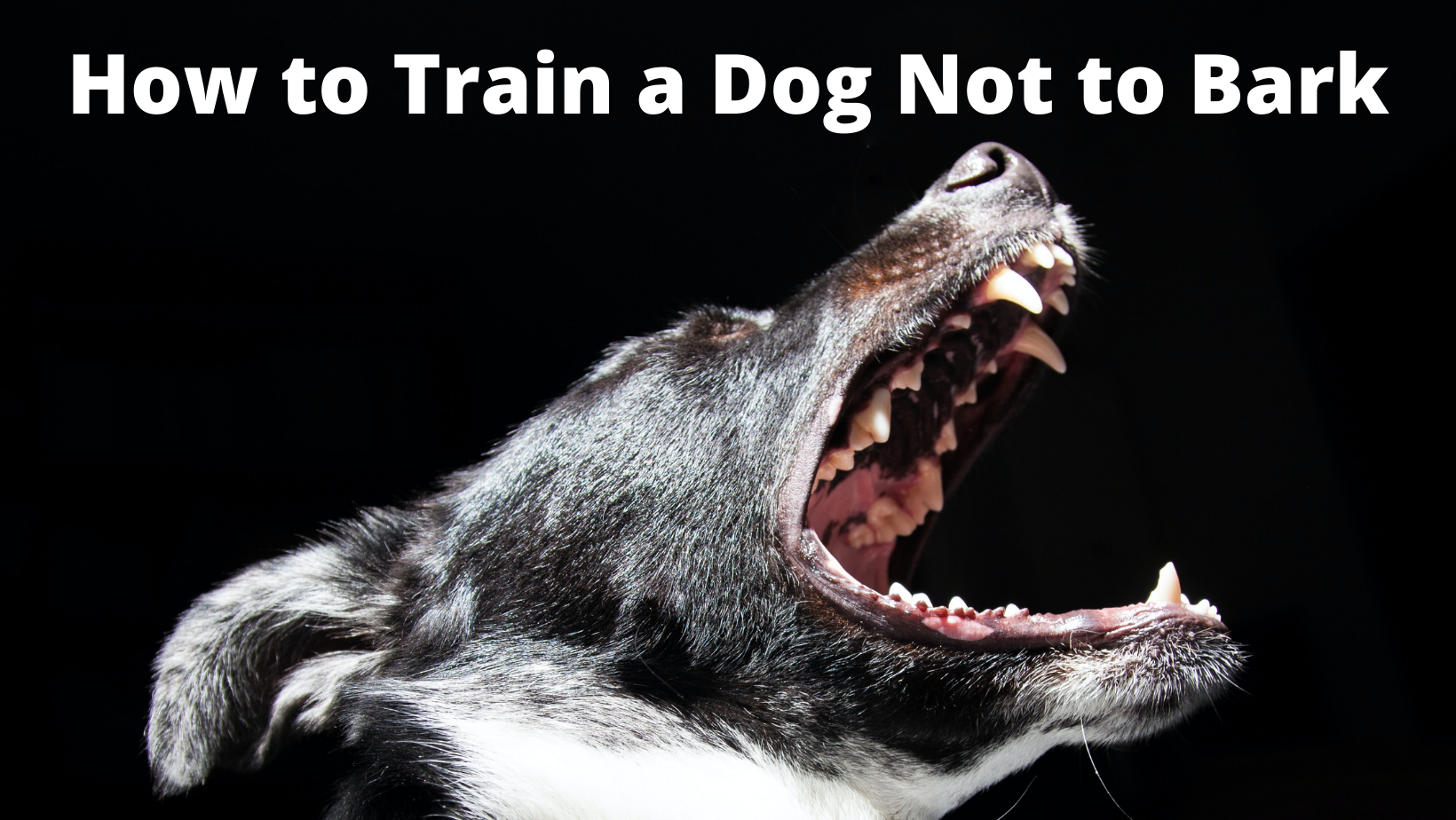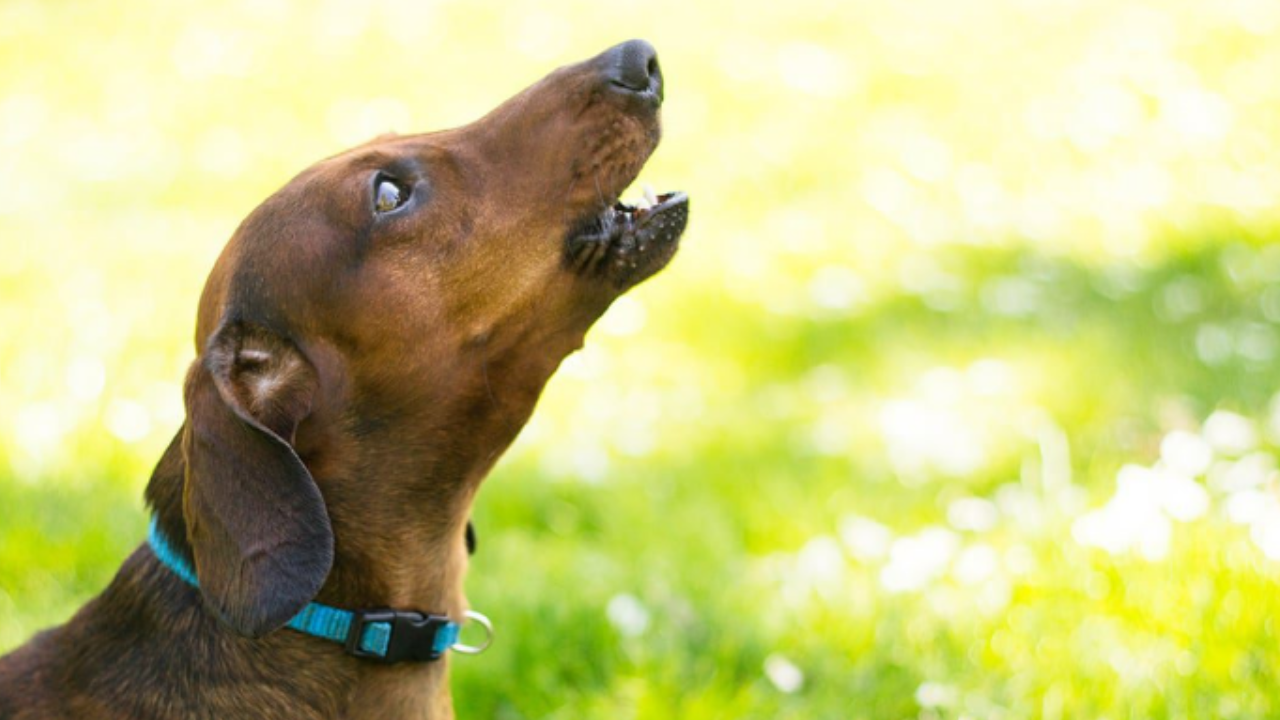How to Train a Dog Not to Bark

Dogs are capable of communicating in a number of ways. Many dog owners are aware of their dog’s body language and what particular indicators may mean. A wagging tail, for example, indicates that your dog is joyful, but a tucked and down tail indicates that he is scared or afraid.
Barking is a big part of how your dog communicates, no matter what he’s feeling. He might be joyful, scared, curious, or just trying to catch your attention.
There might be a variety of causes, but you may ultimately feel that your dog barks constantly. Why does this happen, and how can you assist him stop barking so much?
Why is my dog barking so much?
Understanding some of the reasons why your dog barks excessively will make training easier. Dogs that are guarding their area may bark as a warning to would-be intruders.
Your dog may bark excessively or even demonstrate violent behaviour if he believes his family or personal space is under danger. The intruder might be anything from a tiny animal outside to the pizza delivery guy or a postal service employee, and barking can get louder and more frequent as the intruder draws closer.
Scary sounds can cause excessive barking in dogs. Many dogs are terrified of loud noises such as thunder, a slamming door, or fireworks. Sudden movements might make your dog scared if he is naturally uneasy.
Although new items in the house may not appear to be frightening to you, your dog may convey his fear of them by sounding the alarm!
Anxious dogs can bark a lot even if there isn’t an evident trigger or visual signal, and this is especially true of dogs who have separation anxiety. A dog with separation anxiety may bark endlessly while his favourite human is away, almost as if he is attempting to express his feelings.
Barking might also happen when you’re having a good time. When your dog wags his tail, jumps up, or assumes the play-bow posture in the presence of a new human or animal, joyful barking occurs. His barking might be a greeting to this new person or animal, or it could be a signal that he wants to start playing.
Training a dog not to bark
Favorite treats or snacks may be an effective training technique, especially if your dog is driven by food. Training necessitates a significant amount of time, consistency, and patience. This final component is crucial for teaching your dog to bark less because if you shout at him when he barks, he may believe you’re participating in with the barking and feel encouraged to keep barking.
Instead, try talking to him in a calm manner. “Ah, sure, thank you for letting me know someone is there,” you might say to your dog if he barks while someone is knocking at the door. You can reward him with a treat after he is calm.
You might opt to ignore your dog’s barking as well. By addressing his barking, you are providing him with a favourable response, increasing the probability that he will repeat the activity. You can give him attention and/or a favourite treat once he has calmed down. Reward any quietness, even if it’s just for a few minutes as he catches his air. Training necessitates a significant amount of time, consistency, and patience. This final component is crucial for teaching your dog to bark less because if you shout at him when he barks, he may believe you’re participating in with the barking and feel encouraged to keep barking.
Barking can be minimised in times of anxiety by eliminating the stimuli. If your dog barks at people outside because he can see them out the window, for example, keep the curtains drawn so he can’t see them. This is particularly critical when you are abroad. Leave the television or radio on while you’re gone to reduce alarming sounds outside.
Desensitization training can also be beneficial, particularly if your dog barks at other animals and humans while you’re out walking. Setting aside specified training time allows you to practise. Allow a buddy and their dog to start down the street from you, and you’ll have your own dog waiting for you at the other end of the street.
As you get closer to your pal, start strolling towards each other and continue to give your dog food. If your dog begins to bark, stop offering rewards and immediately turn around. He’ll get used to the fact that he doesn’t have to bark at your buddy or their dog if he’s silent while strolling. You should be able to repeat this practise several times, and you may postpone the training for another day if your dog becomes overly enthusiastic and cannot settle down.
Basic dog training principles include instructions such as “sit,” “stay,” and “talk.” However, once your dog has barked for the “talk” order, you should try to teach him “silent.” You’ll be able to use the “quiet” command in circumstances when your dog is barking excessively with practise and a decent incentive system.
Dogs with behaviour issues or separation anxiety may require further assistance from your veterinarian in the form of drugs and nutrients. If your dog barks because he is afraid or agitated, he may not be in the correct frame of mind to learn how to stop barking.
Your veterinarian may prescribe an anti-anxiety medicine based on your dog’s condition. Calming vitamins, probiotics, and treats are frequently suggested, and dog-pleasing pheromone products can be used in concert with all of these. There is also a lot of anecdotal evidence that CBD oil can help your dog stay relaxed and lower his tension and anxiety levels.
Excessive barking may be an issue for your dog and your nerves! Barking is a primary method of communication for your dog and can be used in a range of scenarios.
Understanding why dogs bark is crucial to understanding how to educate your dog to stop barking. You can reduce your dog’s excessive barking and assist strengthen your bond with your furry best friend with the appropriate training and a lot of patience.





